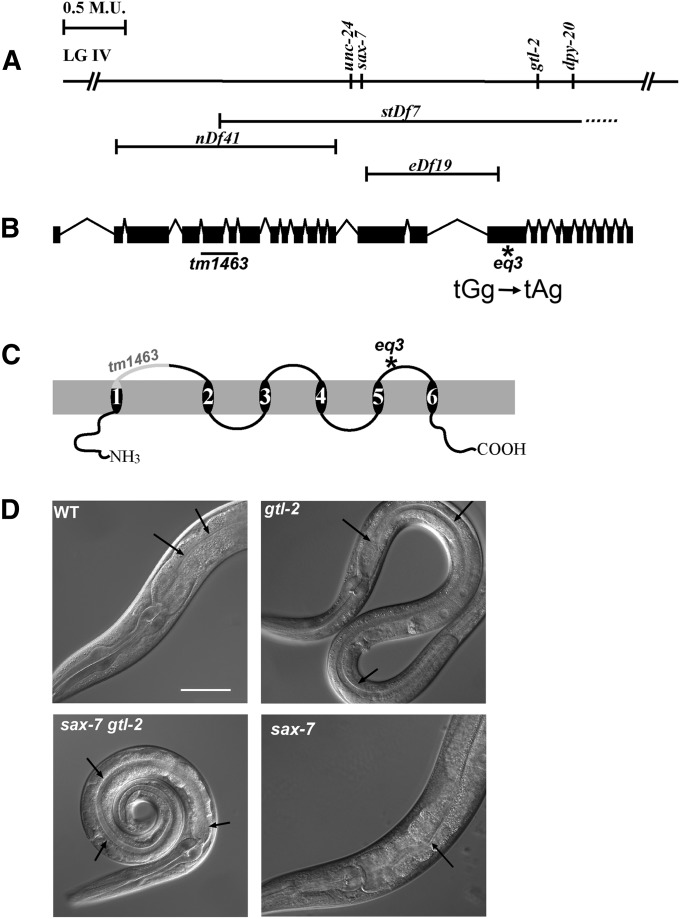Figure 1.
sax-7 and the closely linked gtl-2 genetically interact to produce synthetic coiling of the body. (A) The positions of sax-7 and gtl-2 on linkage group IV. The chromosomal deficiency stDf7 uncovers sax-7, gtl-2, and dpy-20. The right breakpoint of stDf7 is not known (dashed line). Neither sax-7 nor gtl-2 is uncovered by two other deficiencies in the region, nDf41 and eDf19. (B) The 26 exons of gtl-2 are represented by solid boxes. The positions of the eq3 and tm1463 mutations are indicated. (C) GTL-2 is predicted to have six transmembrane domains that form a pore for cations with the N and C termini depicted as being cytosolic. Also indicated are the regions of the protein that are predicted to be affected by the eq3 or tm1463 mutations. (D) Differential interference contrast micrographs of wild-type (WT), sax-7gtl-2, gtl-2, and sax-7 adult animals. Note that the scrawniness of the gtl-2 and sax-7gtl-2 animals is quite apparent as they are thinner and smaller than wild-type and sax-7 animals. In addition to being scrawny, sax-7gtl-2 animals also tend to coil their bodies, unlike sax-7 or gtl-2 animals. Arrows point to the intestinal lumen, which is enlarged in gtl-2 and sax-7gtl-2 animals, indicating constipation, compared to wild-type and sax-7 animals. Bar, 50 µm.

